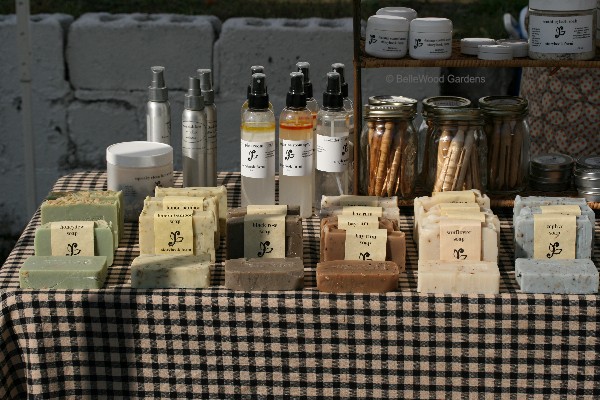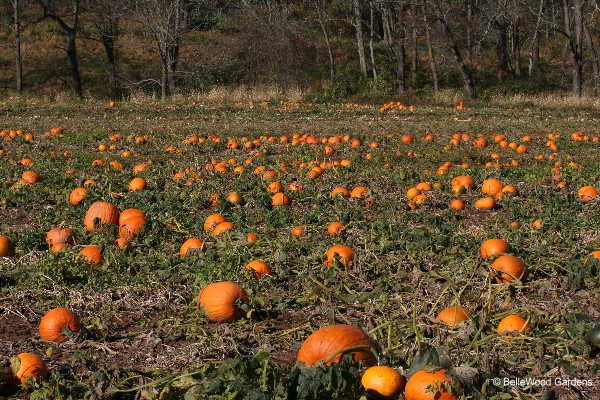

There's a picture. The caption says, "Judy Glattstein, a gardening author, using mulch and leaves to cover hyacinth bulbs and outwit squirrels on her property in Frenchtown, N.J."
Barbara Whitaker's article begins "In the last 11 years Judy Glattstein has planted more than 40,000 spring-flowering bulbs on her 9-acre property in Frenchtown, N.J., near the Delaware River. "Bulbs are flowers in a package," said Ms. Glattstein, a gardening consultant and author. "You get these little lumpy things, you put them in the ground in the fall, and you have faith winter is going to pass, spring is going to come and these are going to bloom. Isn’t it a wonderful thing?"
It's a pleasant article that I hope will encourage more readers of that august newspaper to get out there and plant bulbs, whether it's a handful, a hundred, or by the thousands. There's still time. Get the little ones - crocus and snowdrops, scillas and such - in as soon as you can. They dry out more quickly than larger bulbs. Daffodils and hyacinths next, maybe try a few ornamental onions, aka alliums. Tulips can wait until Thanksgiving. All that messing about in the dirt will be amply rewarded when they flower next spring. And after all, if you don't plant them, the bulbs can't flower.
.
.
.
.
.
If you have never done this before coaxing spring-blooming bulbs into early bloom can seem daunting. In reality, many kinds of bulbs already have the embryo flower within. So it is just a matter of potting them up, cooling them down so "winter" comes, then bringing the pots into warmer conditions. Once vernalized, the bulbs bloom. There's a minimum chilling period of 12 to 14 weeks. Pot in October, flowers in February. When it is still winter in the real world. And by February gardeners are convinced that winter has gone on for far too long.
Today I gave a demonstration and workshop on potting bulbs for forcing, for the Tohickon Garden Club. We had a wonderful turnout of almost 30 members. Everyone went home with a pot of hyacinths, and the knowledge how its done.
Do I want to talk about bulbs? You mean those lumpy brown objects that at this time of year are waiting to become buried treasures, lurking underground until spring when they'll reveal a rainbow of flowers? Sure I want to talk about bulbs. You betcha! Enthusiastically! Con mucho gusto! So when I got a call from Barbara Whitaker at the New York Times asking me about planting bulbs she might have gotten more than she expected. We'll see what appears in next Sunday's regional supplement. Then, of course, came the question - could they send out a photographer. With a plentitude of bulbs in the garage I had a good supply of the necessary props. Laura Pedrick arrived in midafternoon and after a brief discussion of what, where, and how this would happen, I happily planted some hyacinths that were waiting for me to do just that very thing.
.
.
When my plane landed an hour and a half late, I opted to go straight to the Minnesota Landscape Arboretum rather than the hotel as originally planned. Any time in a garden is better than time in a hotel room, don't you agree? So that's what we did. Ken even let me out of the car by the visitors center before he went off to park. A good thing, because this popular place was crowded with visitors and he had to use the furthest car parking lot. Which gave me time to enjoy all the pumpkins and scarecrows about which I've previously written. We met up with a couple of people - Claudia, who is also on the Minnesota Water Gardening Society board, as is Ken, and Shirley, who is director of adult programs at the Arboretum. Shirley just had time for a quick hello, and then back inside to prepare for our wine and hor d'oeuvre reception that evening(Let me say here that her artichoke dip and stuffed mushrooms were very tasty.) The t three of us had a delightful stroll around the nearby portions of the grounds, and then drove on the loop that gave me an overview of the outlying portions.
That was Saturday afternoon, with mild and sunny weather. Sunday was promising rain, gray and completely overcast. But after brunch and my afternoon lecture I managed another quick walk around parts of the Arboretum I had not yet seen, guided by Duane who is in charge of the perennial borders and also works with their annual displays. Good opportunity to stretch my legs before the hours at the airport and in an airplane on my way home to New Jersey. Time in a garden is better than time in an airplane. But I need to come back for another visit. Never did get to see the orchards or the apple barn. And that's big time here, for the Minnesota Landscape Arboretum is where the Honeycrisp, a most excellent apple, was developed.I heard they have another in the pipeline that's even better, and a couple of trees of an as yet unnamed apple that tastes like a tropical fruit. I'd have to sample that one to know what I think. But I do think that this garden in the Land of 10,000 Lakes is a wonderful place to visit.
.
.
.
.
.
A weekend in the Twin Cities of Minneapolis / St. Paul. I was there to give a lecture: "At the Water's Edge: Plants for Moist to Wet Sites" to the Minnesota Water Gardening Society. They're a dedicated group of enthusiastic people whose goal is increasing the enjoyment of water gardening by sharing their experiences, educational programs, and promoting the rewards found through water gardening with each other and to the public. A flying visit had me arriving mid-afternoon on Saturday and returning home again on Sunday evening. Fortunately for me, the Saturday evening reception, Sunday morning brunch and afternoon lecture were all held at the Minnesota Landscape Arboretum. That gave me time for a quick saunter each afternoon, all too brief in time but sufficient to whet my appetite for a return visit with more leisure - and more time in the garden.
This autumn's event had stunning displays of more than 20 varieties of pumpkins, including Atlantic Giant, Big Max and Baby Boo, red white and blue pumpkins, as well as traditional orange, and many other forms of squash and gourds. They were piled on the sidewalk, stacked on hay bales, arranged on walls and steps and tables.
.
.
.
.
.
.
.
There is an exquisite exhibition at the Frelinghuysen Arboretum in Morristown, New Jersey. The artist-members of the Guild of Natural Science Illustrators created 42 paintings which present the symbiotic relationship of butterflies, moths, and pollinating insects with the specific plants (or plants) necessary to their survival. From egg to larva, to chrysalis / pupa to adult, each fascinating image depicts the interdependence of insect and plant. The broad range of butterflies and moths, and a couple of bees presented here range from the ubiquitous cabbage white, detested by vegetable gardeners, to the ethereal luna moth, whose mouthless adults live for but a week, procreating and dying. Each image is accompanied by a brief text describing the life cycle of each butterfly, moth, or bee and mentions the plant(s) on which it depends. Techniques range from colored pencil to watercolor, egg tempera to gouache. I slowly, step down by step down, enjoyed the fascinating display of images lining the stairwell and lower gallery. I found each work of art fascinating, for the information presented in each and the excellence of all the artists.
A number of the images are available by order direct from the specific artist who created the work, for purchase as giclee art prints. Giclee (pronounced Gee’clay) is a French term meaning to spray or squirt. The original is scanned directly on a drum scanner then printed using special light-fast inks, which, if kept out of the sun, will remain true for up to 25 years. The image has all the tonalities and hues of the original painting.
The exhibit, which opened on October 1st will run through the rest of the month, closing on October 31, 2007. I plan to go back for another viewing. If you cannot visit in person, go here for a virtual show.
Along with flavored vinegars, dried herbs, baked goods, condiments, wreaths, and homemade herbal crafts, there would be tours of the Wick Garden by Herb Society of America volunteers, and visitors could purchase apples and fresh produce "picked to order" from the garden.
The event would be held in Morristown, New Jersey at the Wick house and farm in the Jockey Hollow unit of the Morristown National Historical Park. Jockey Hollow was a popular camp ground for General Washington's army, used by portions of the Continental Army for a total of 24 months during the American Revolution.
During the winter of 1779-1780 the farm, together with a few adjacent farms, was home to 13,000 soldiers of the Continental Army. The farm house itself became winter headquarters for General Arthur St. Clair.
One volunteer was crafting lavender bottles, basket-weaving narrow ribbon around the stems of fresh lavender. They were bought as fast as she could make them. There was a lavender fan - stems of dried lavender bunched for the handle while the flowers were spread out as the ribs of the gauzy fabric fan. Fire faggots too, dried bundles of culinary herbs to toss on the fire for aromatic fragrance or used in the kitchen to flavor fish or cheeses. All sorts of vinegars, from pale pink chive vinegar to more full-bodied blends. Honey, with a glass-fronted demonstration hive to observe the busy bees. Lavender-infused honey. Catnip toys and homemade dog biscuits.
I made my usual Sunday morning run to the Dvoor Farm farmers market, which will operate through the end of October. The weather has been ridiculously warm, with daytime temperatures in the high 70s. No rain worth speaking of since September 11th. The veendors continue to bring great vegetables for all their eager customers.
.
Some pleasant converation with friendly vendors, choosing spinach and basil, honeycrip apples and more, good food for our meals in the week ahead.
In The New York Times In the Region section
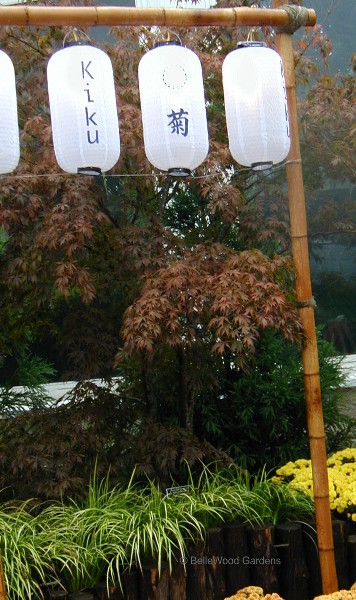
at the New York Botanical Garden. Ever since my behind the scenes visit
I've been eagerly anticipating the opportunity to see the culmination of years of effort.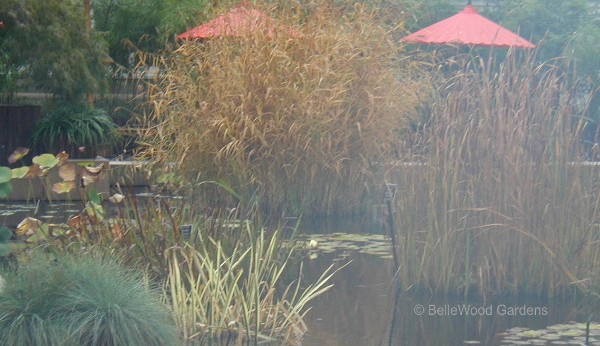
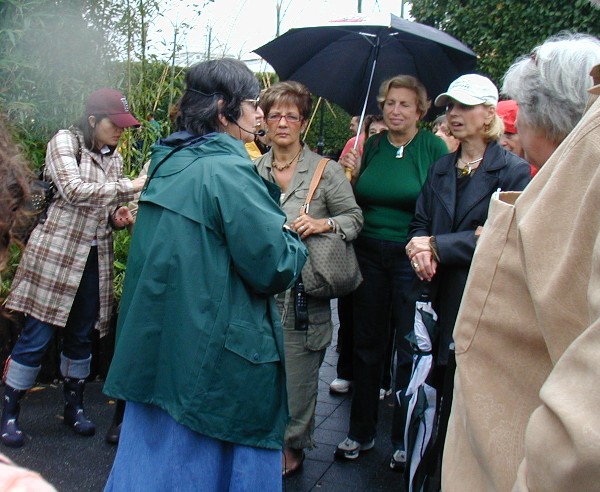
Photograph Credit Shohei Suzuki 2007. All rights reserved.
Too bad I did not have a smaller version of this elegant oiled paper parasol.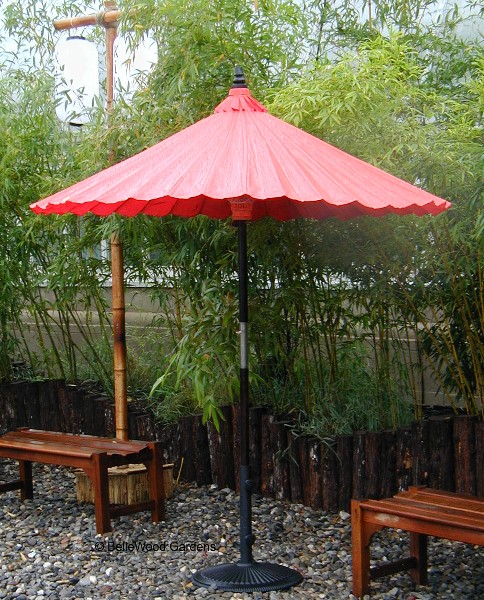
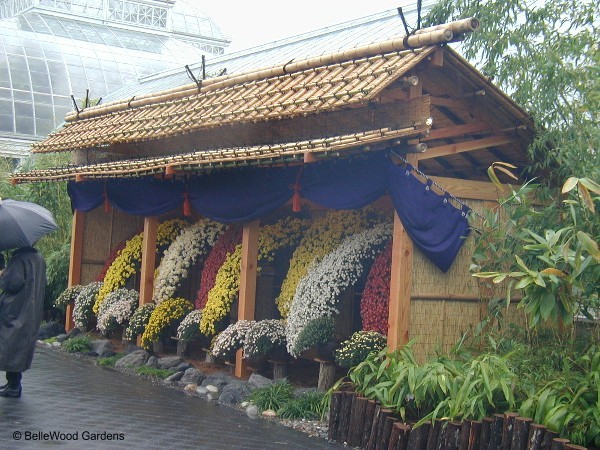
Small, daisy-flowered kengai, now in sumptuous bloom, were raised up
on sections of tree trunks to accommodate their sweeping cascades of flowers.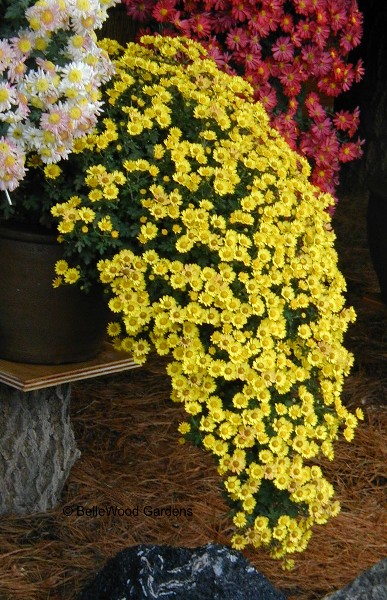
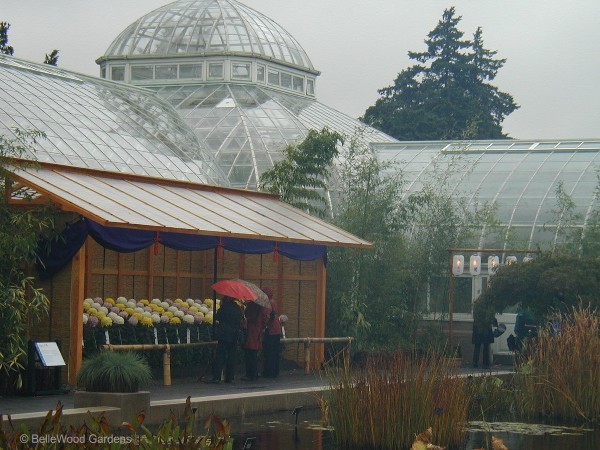
108 perfect flowers, precisely arranged in diagonal lines. Their colors, of rose pink,
pure white, and sunny yellow, are those traditionally used in the bridle,
tazuna-ue, of the emperor's horse.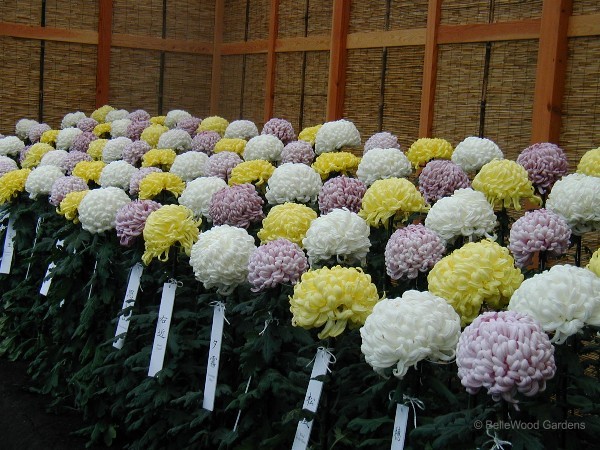
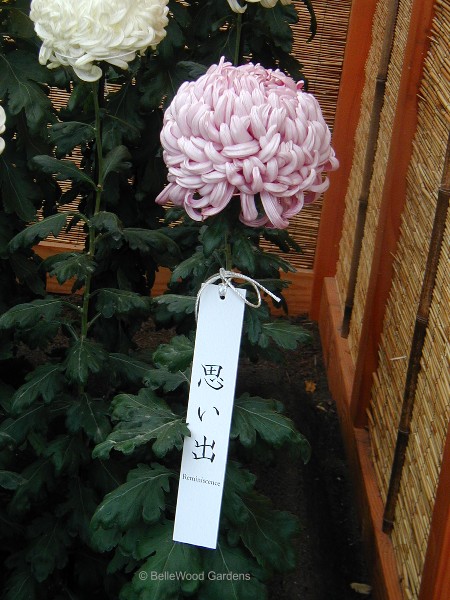
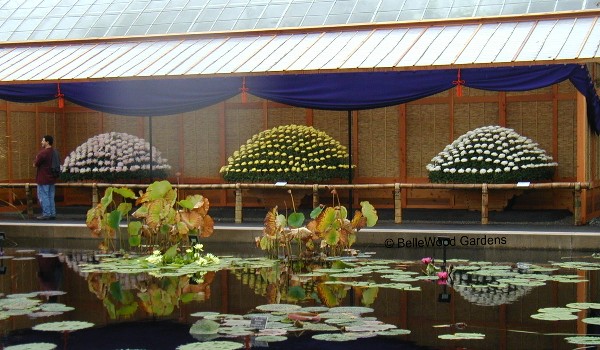
As well, there are three spectacular plants grown in ozukuri, thousand blossom style.
The hundreds of flowers simultaneously in bloom are planted in sekidai,
specially designed, traditional cedar wood containers.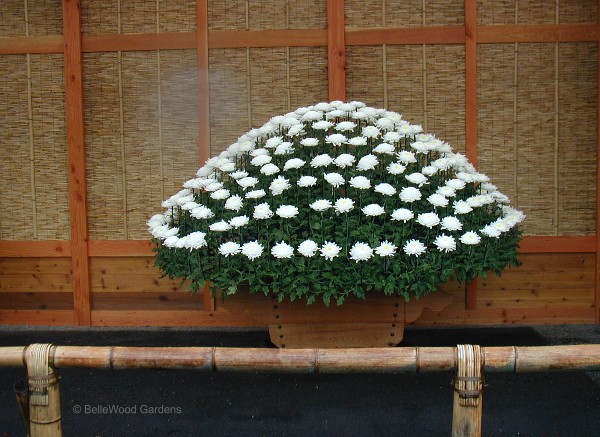
The flowers last for 10 days to two weeks. This means that the first group of plants on display, in all three styles,
will be replaced midway through the month-long exhibition, providing all visitors a view of kiku in their prime.
The first group had been covered with shade cloth to lengthen their nights and coax them into flower in time
for the exhibition's opening. As well, additional plants were grown as reserves in case of mishaps.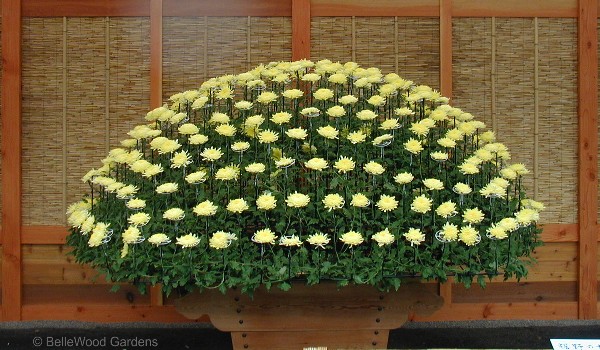
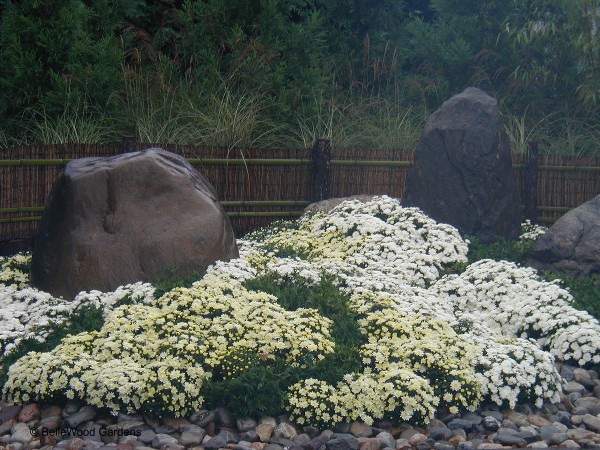
of white and creamy, old ivory yellow chrysanthemums planted among several boulders, here polished
with rain. The flowers foam among the stones, splashing out onto the cobblestone shore.
set off by liriope and black mondo grass, Ophiopogon planiscapus 'Nigrescens'.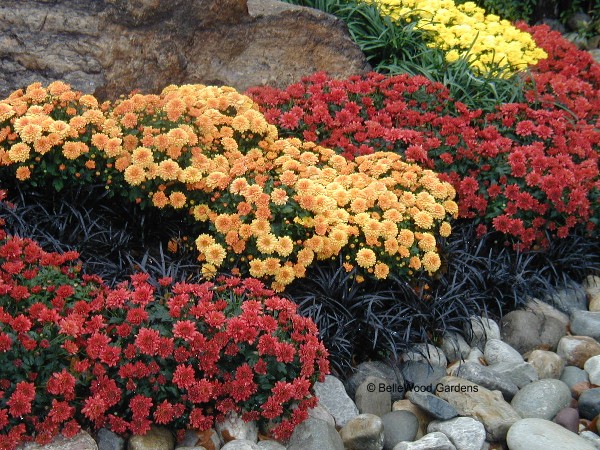
And in this courtyard Japanese maples are at their peak of color, that which the chrysanthemums reflect.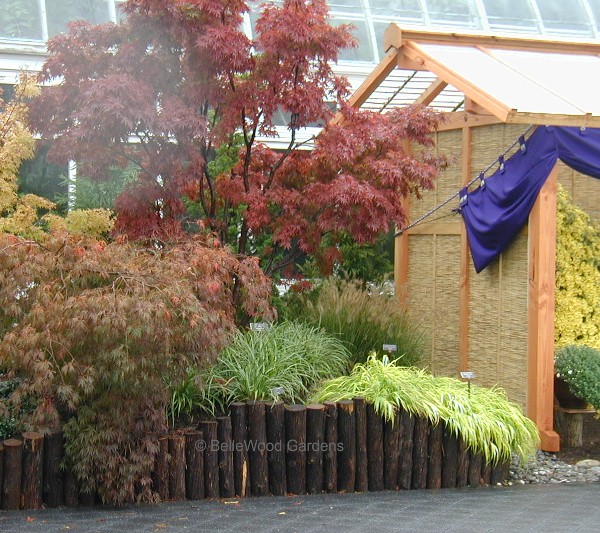
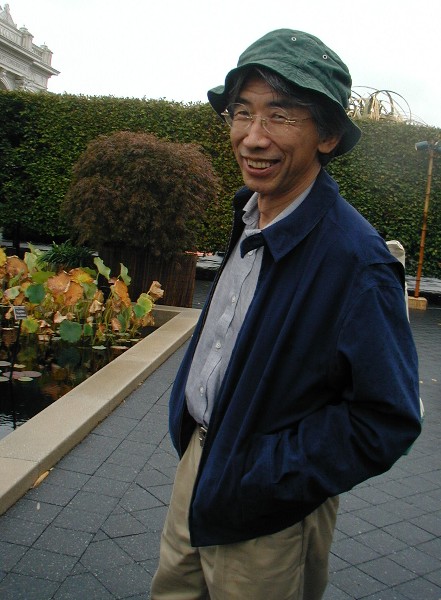
as refined, as any he has seen when at home in Japan. It was clear to him that no effort had been spared
to bring the revered traditions of kiku to the New York Botanical Garden's Art of the Chrysanthemum exhibition.
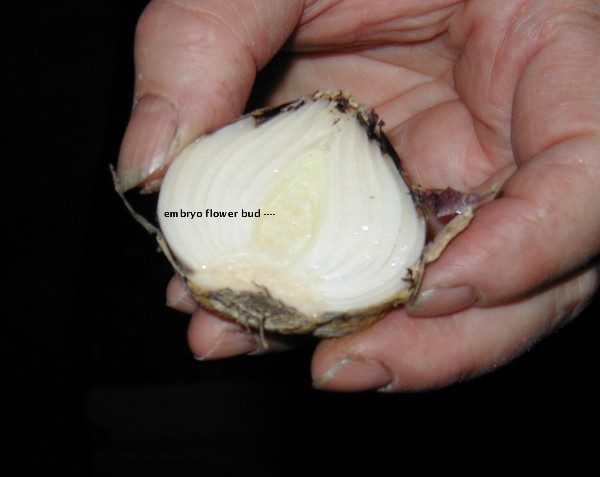
Photograph Credit Joan Carter 2007. All rights reserved.
Hyacinths are easy to force. Symmetrical, just place 3 top-size bulbs in a 6-inch pot partially filled with soil.
Add enough more soil so the tips just peek through. Label, water, chill. It's that simple.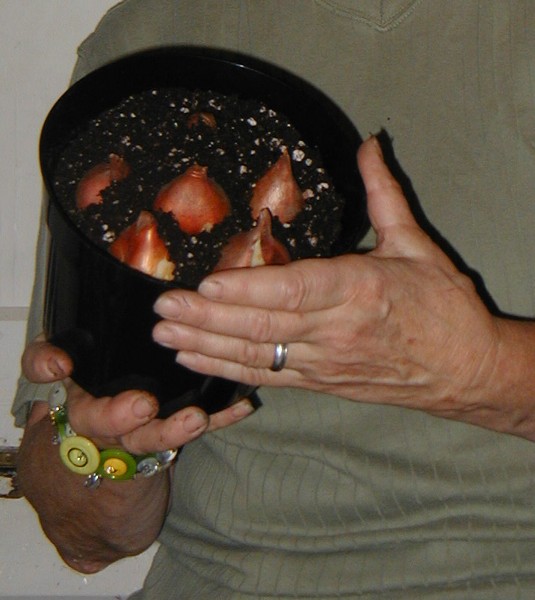
Photograph Credit Joan Carter 2007. All rights reserved.
and a more rounded side. The first leaf appears towards the flat side. For a 6-inch pot, place five tulips bulbs
with their flat sides towards the rim. One more bulb in the center.
Cover with soil, label, water, and on to the next pot.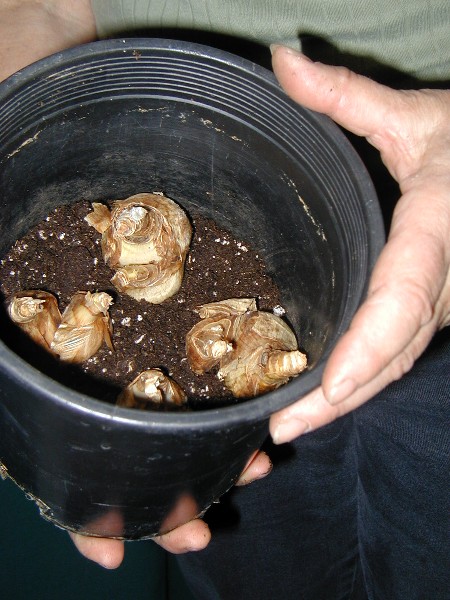
Photograph Credit Joan Carter 2007. All rights reserved.
Use a standard pot, one that's as tall as it is wide. Fill it a third full of soil
and place four daffodil bulbs equally spaced. Call it top, bottom, side, side.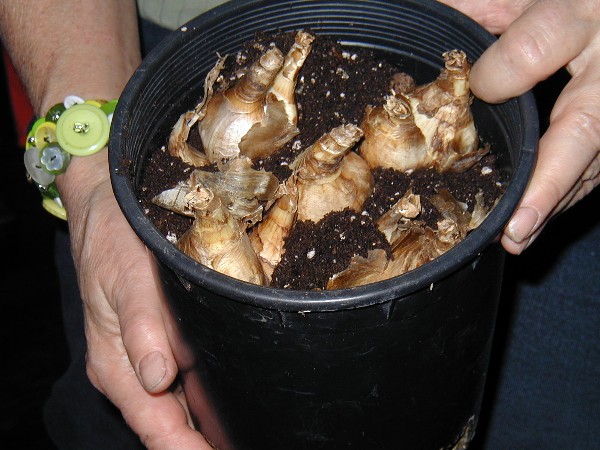
Photograph Credit Joan Carter 2007. All rights reserved.
Add four more daffodil bulbs, being careful to fit them in the gap and not directly on top
of the first set of bulbs. Add one more in the center, for a total of nine daffodil bulbs.
Remarkably, they'll all flower at the same time and at the same height.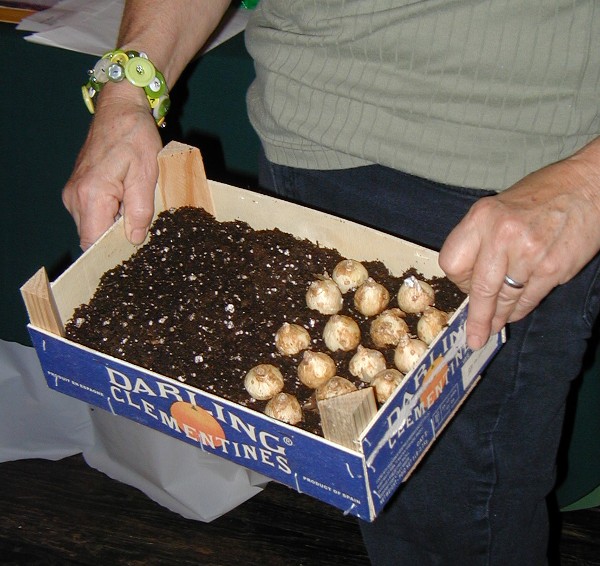
Photograph Credit Joan Carter 2007. All rights reserved.
I used the same method as appeared in my October 2007 Real Simple article, "Easy Indoor Gardens".
Take an empty clementine box and put a couple of coffee filters in the bottom. Fill partway with soil.
Start packing in as many grape hyacinth bulbs as you can fit, leaving just a little space between each one.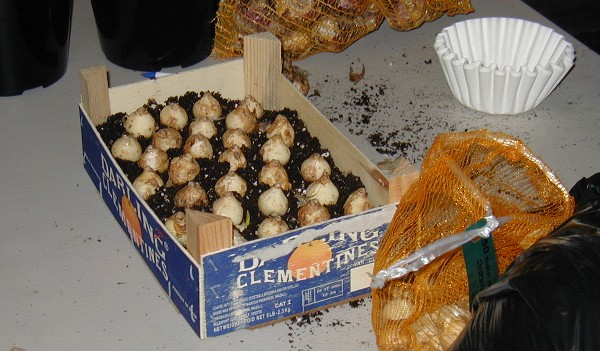
Photograph Credit Joan Carter 2007. All rights reserved.
Their leaves will soon appear (grape hyacinths do that, even outdoors in the garden.)
And shortly thereafter, I'll have a box filled with soft blue flower spikes.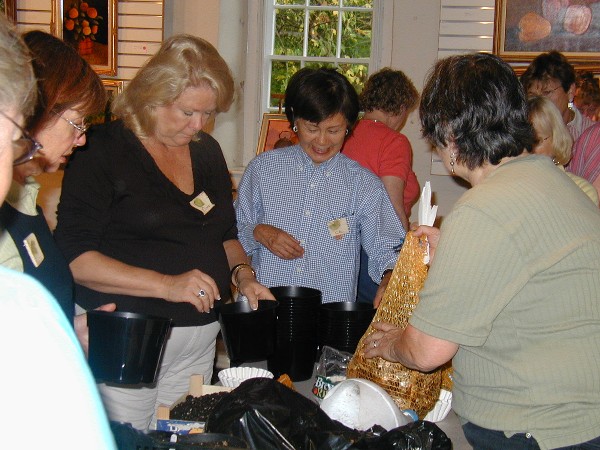
Photograph Credit Joan Carter 2007. All rights reserved.
and ready to give it a try. It's a good thing I had some help handing out pots and a label each, coffee filter for a liner,
scooping soil, and passing out three bulbs of either eponymous 'Delft Blue' or salmon orange 'Gipsy Queen'.
A good time had by all, including me. Plus, I went home with the demonstration pots, a start on my bulbs for winter bloom.
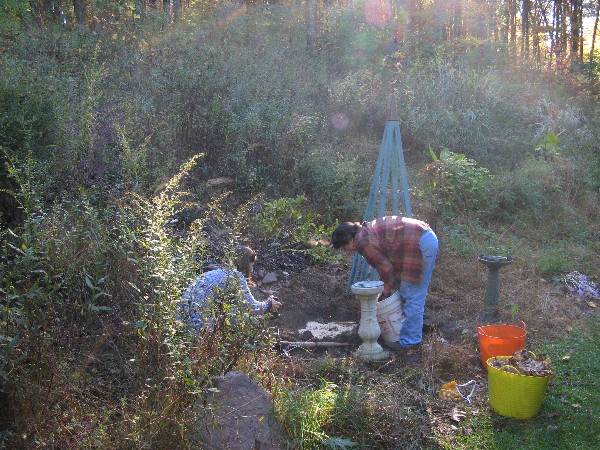
Photograph Credit Paul Glattstein 2007. All rights reserved.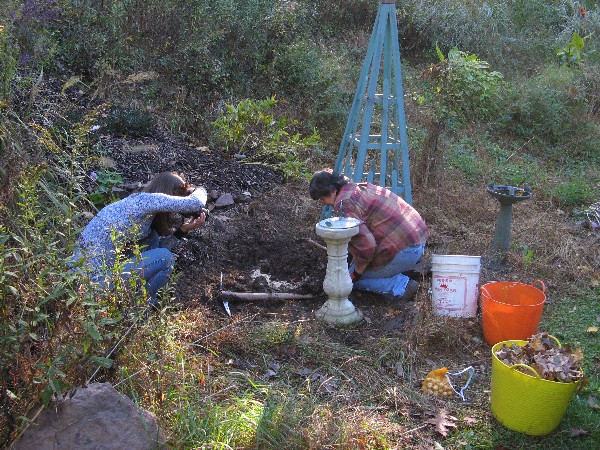
Photograph Credit Paul Glattstein 2007. All rights reserved.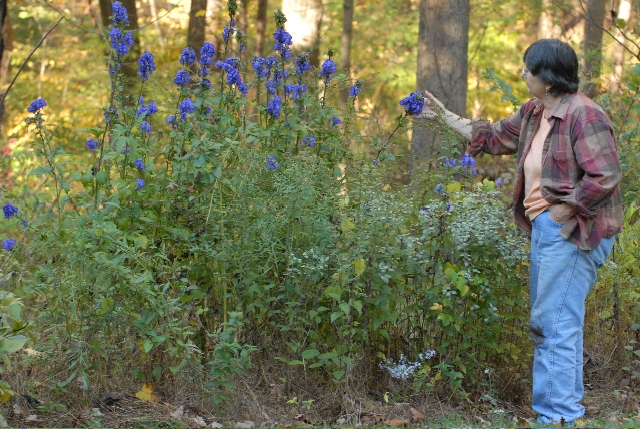
Photograph Credit Laura Pedrick 2007. All rights reserved.
She especially liked the rich color of the monk's-hood in bloom.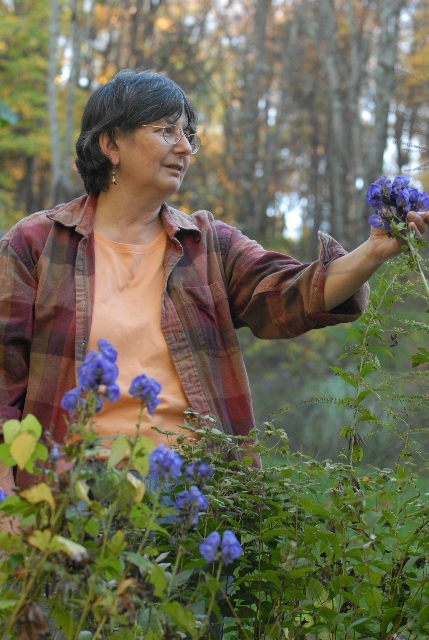
Photograph Credit Laura Pendrick 2007. All rights reserved.
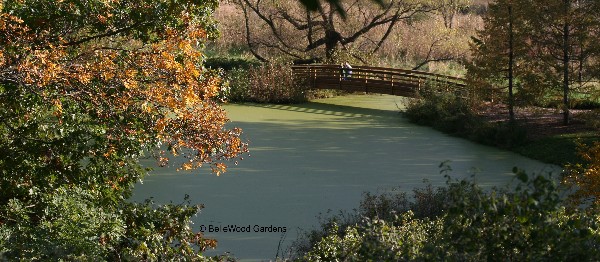
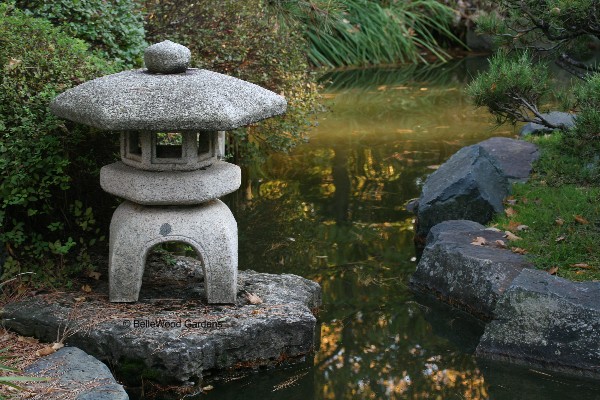
designed by Koichi Kawana.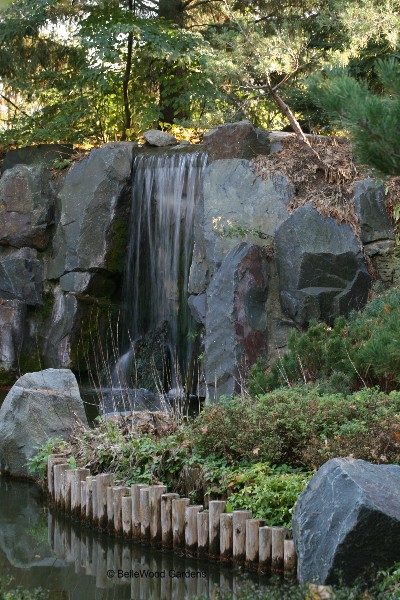
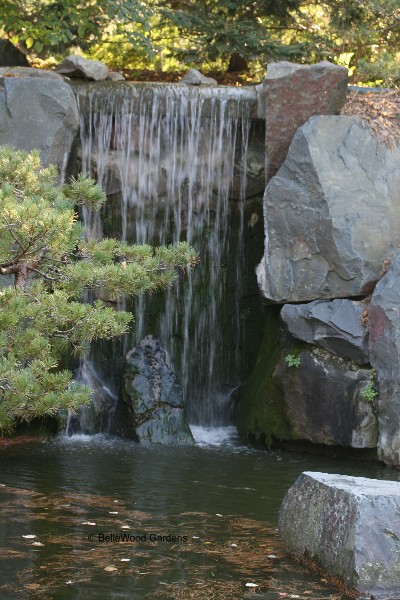
Such stones are called "carp leaping upward"
and if he succeeds, the fish will become a dragon.
There are some very large koi in the little lake. Members of the water gardening society
will care for them in protected indoor conditions over the long Minnesota winter.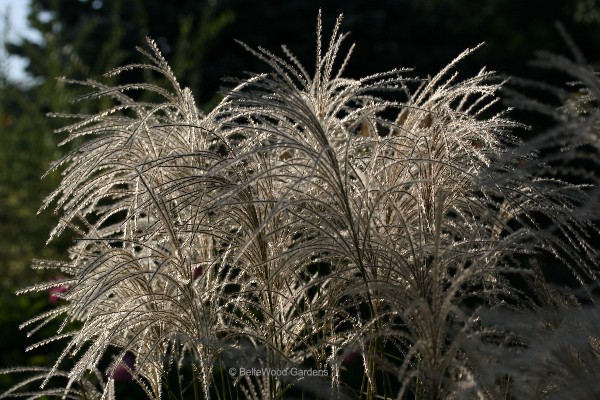
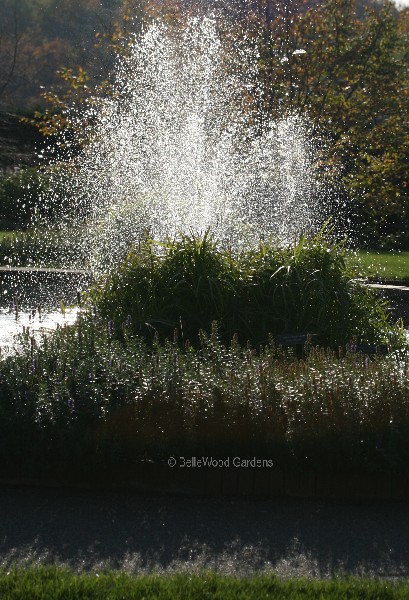
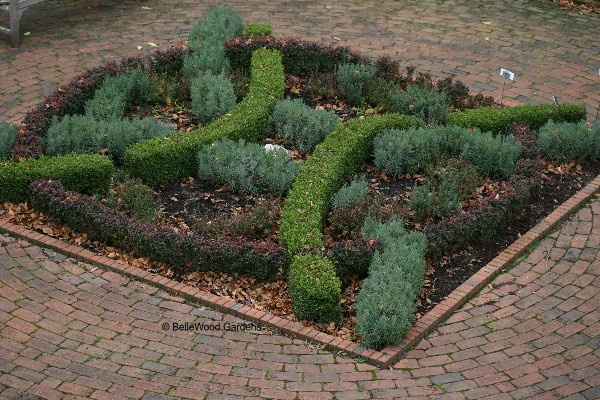
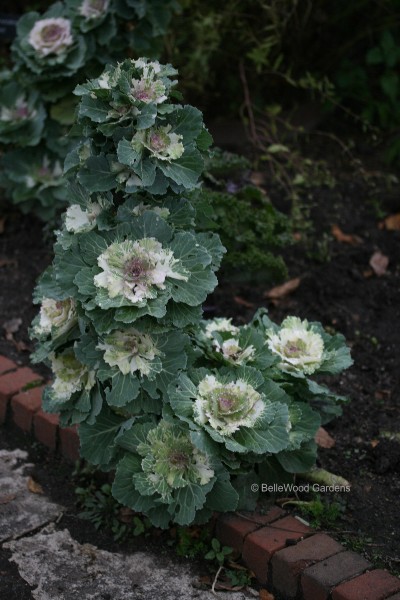
to scatter small cabbages up and down the stalk. Surely if there were ornamental Brussels sprouts I'd have heard . . . .
that seem to say Carpe diem for autumn's black frosts and winter will come all too soon.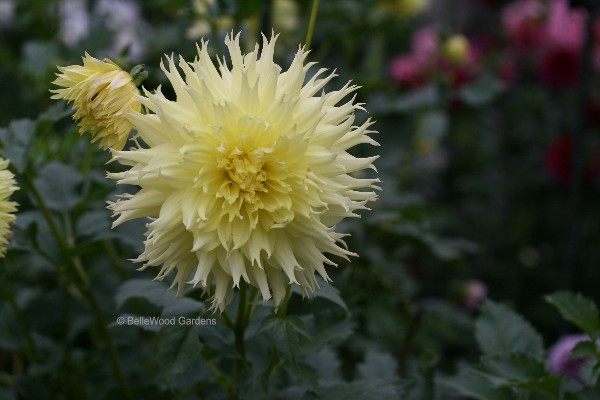
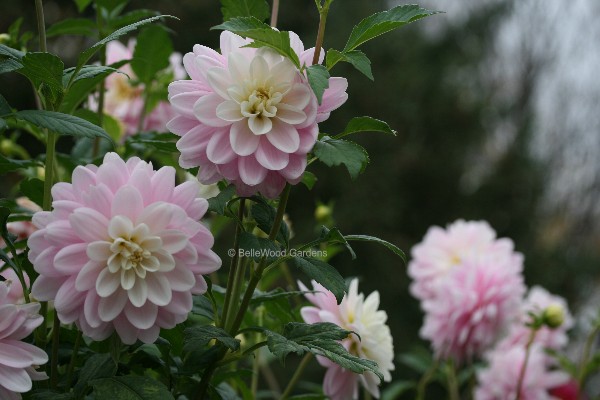
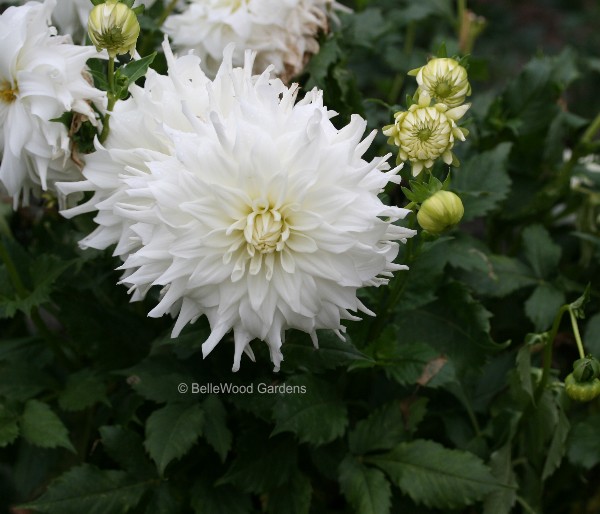
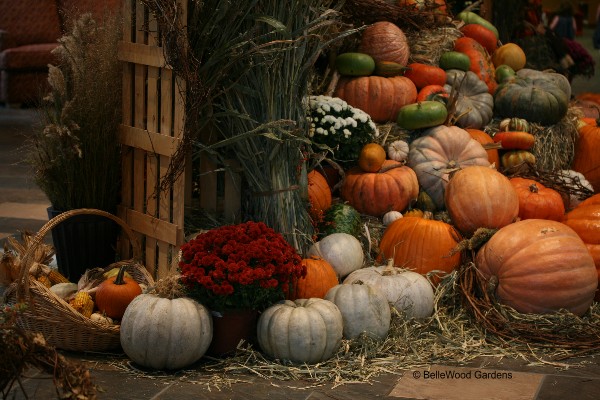
Nice touch (useful too) - there was a cabinet with sample pumpkins
each carefully labeled for identification.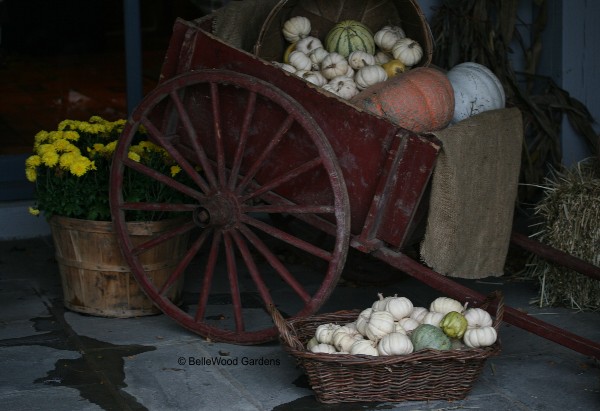
in and out of a vintage handcart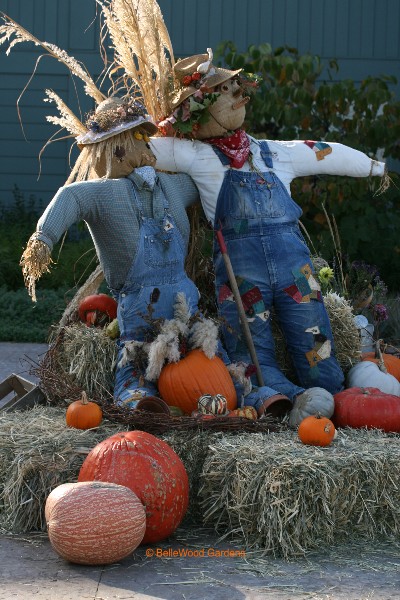
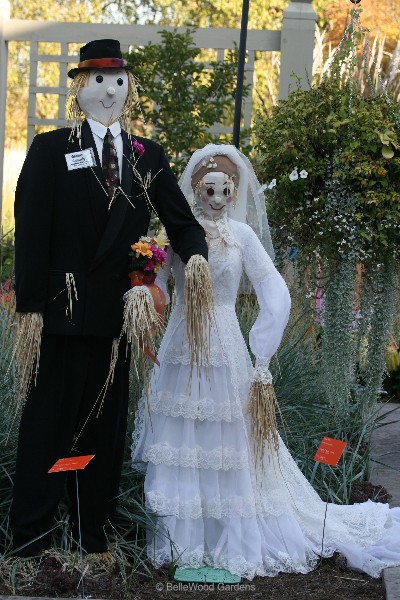
Barry Johnson created the groom, Lydia Johnson made the bride.
Sweet couple.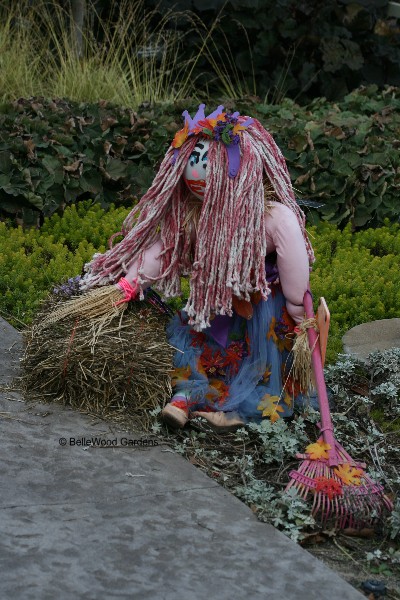
She looks more irked than balletic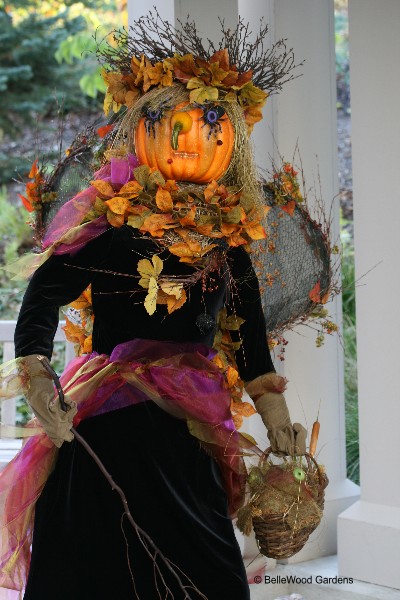
Those spider eyes are a wicked touch.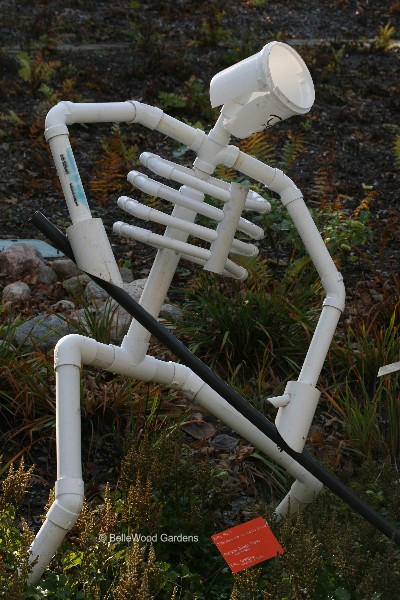
This one is Albert Hoe, Hot and Dry Summer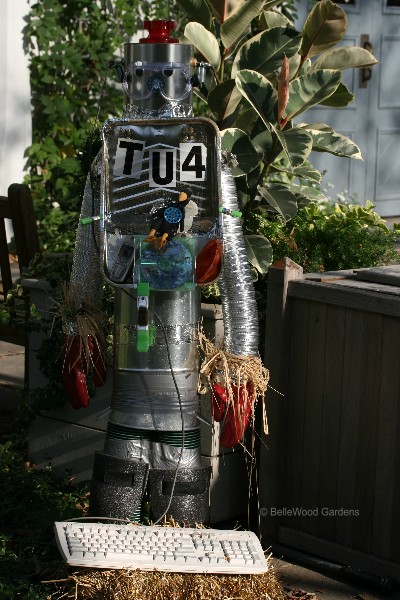
R2D2 and 3CPO's cousin, perhaps?
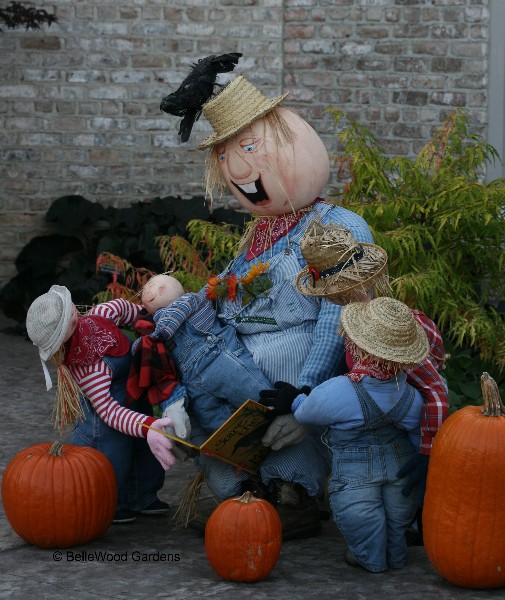
Second prize for individual category.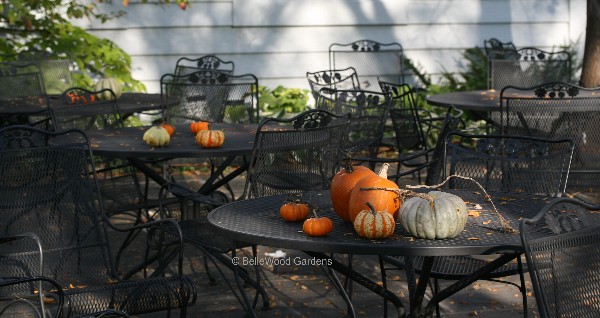
terrace tables of the cafeteria-style restaurant.
And indoors, glass vases showcase mini-pumpkins and bittersweet.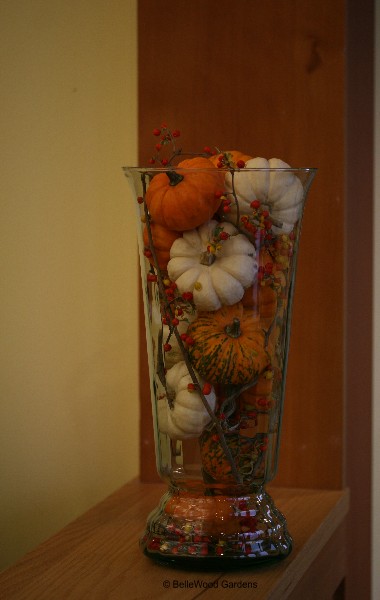
children of all ages, throngs of visitors, myself included.
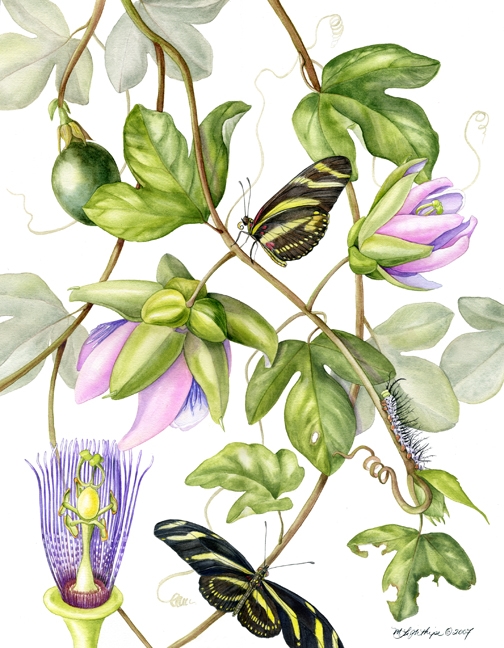
Zebra Longwing on Passion Flower Vine
© Mindy Lighthipe, courtesy of the artist
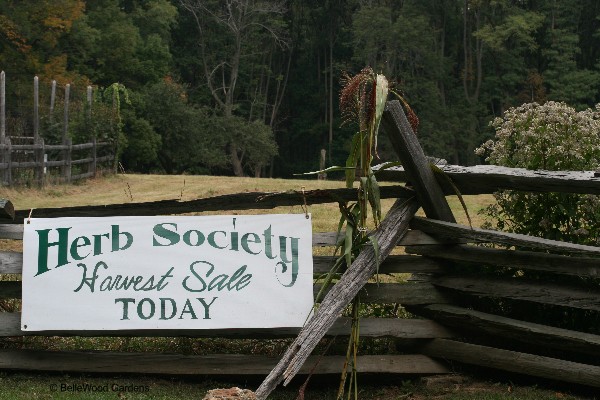
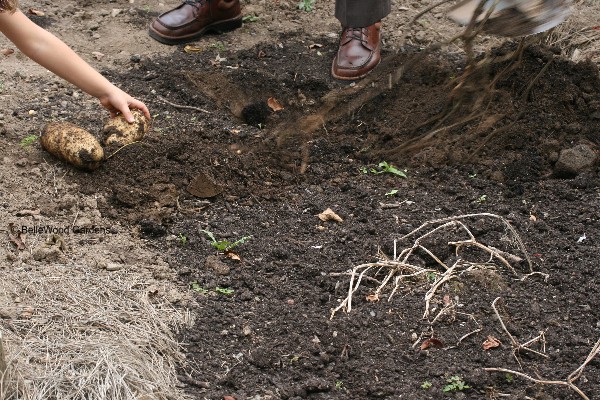
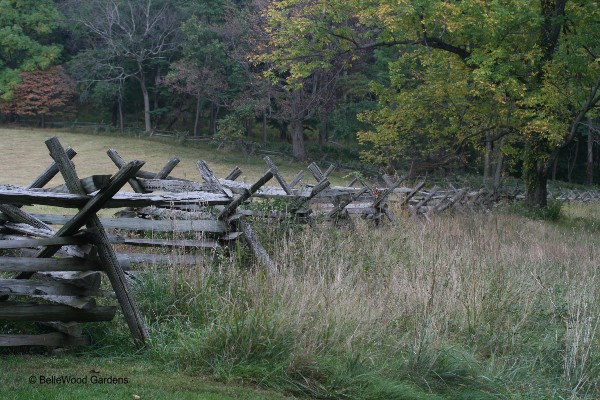
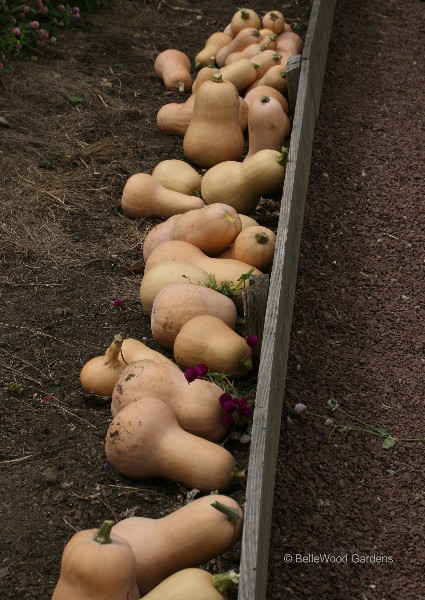
Priced at $1 for the smaller squash, $2 for the larger ones, these were a popular item.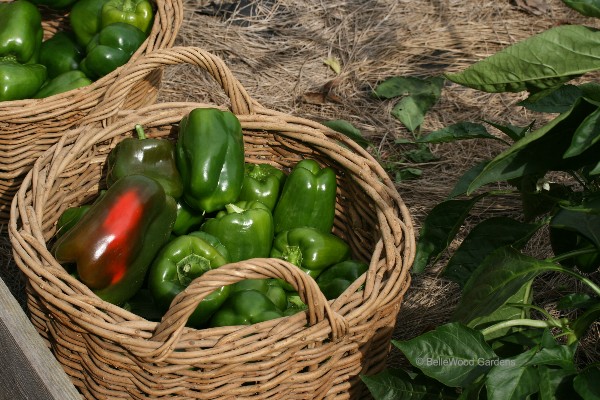
has provided an extended growing season for tender vegetables such as these.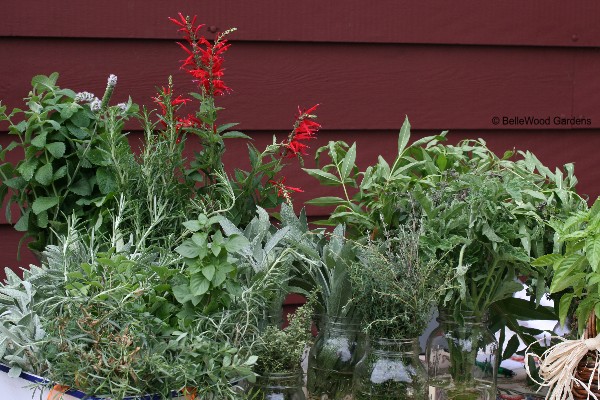
marjoram and lemon verbena, thyme and mint and more. I saw someone snipping lavender for a visitor.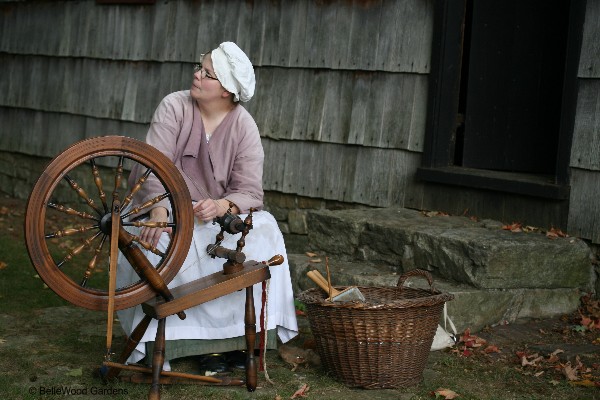
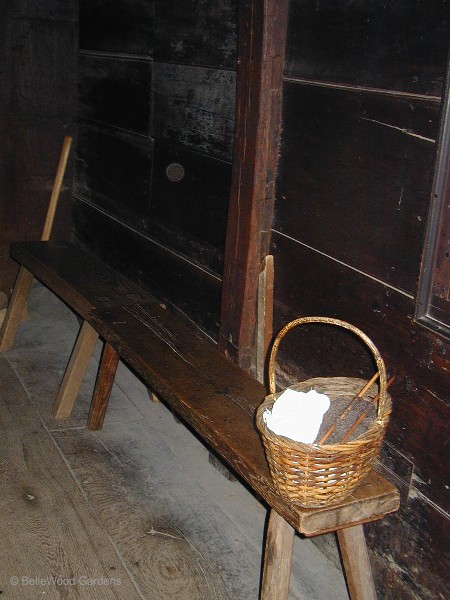
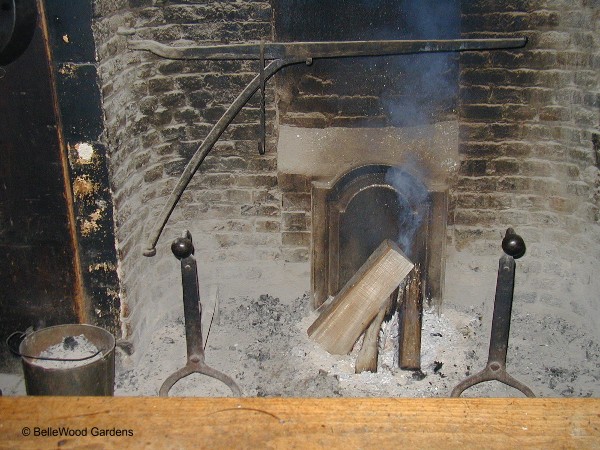
both indoors and outside.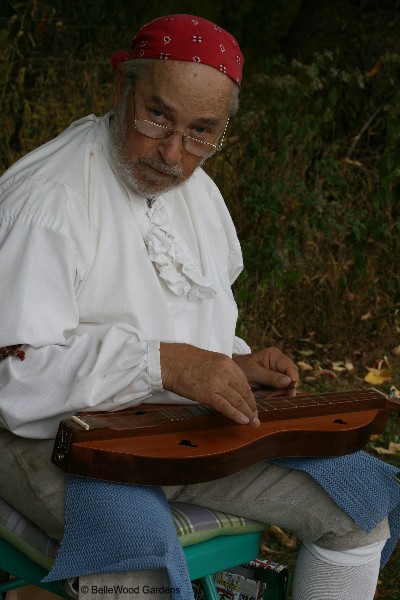
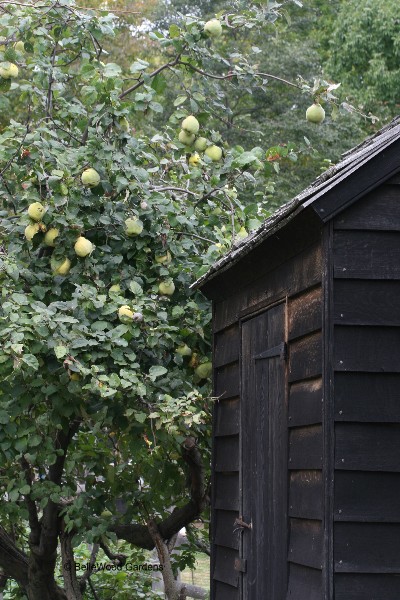
But none for sale. "They're no good until after a frost." the ladies insisted.
As well, it turns out they make quince jelly themselves,
a better reason why there's no fruit for sale.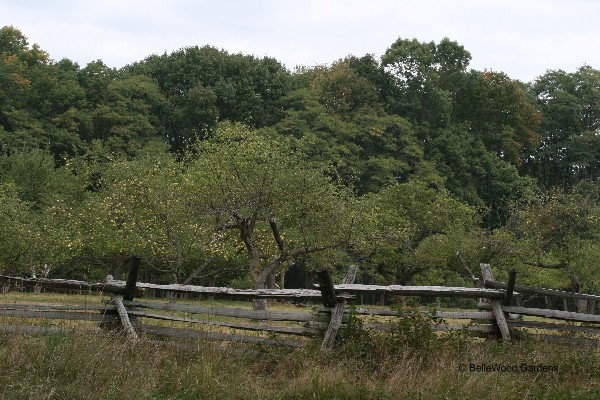
and history's yesterdays.
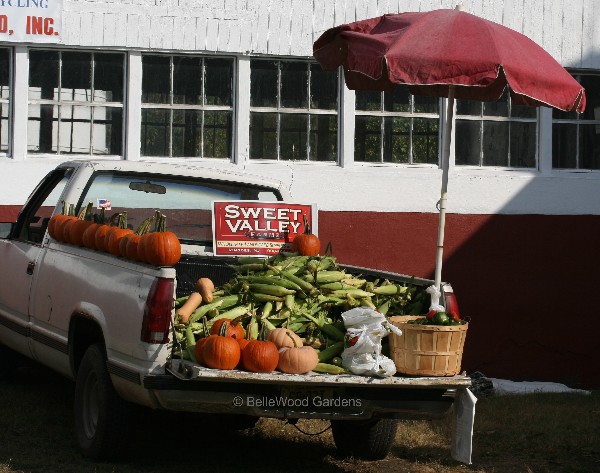
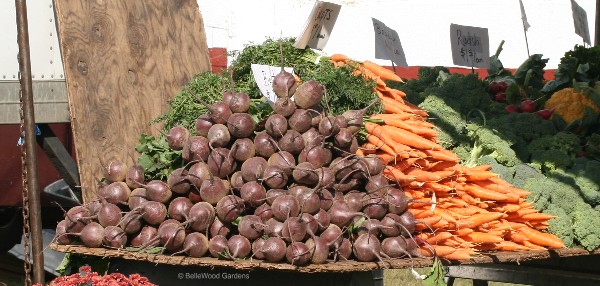
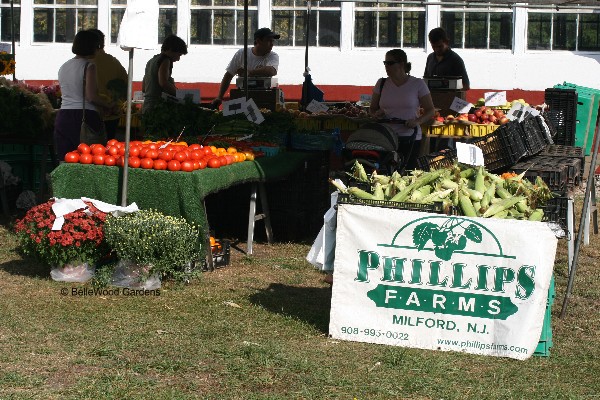
tomatoes plump with juice and flavor.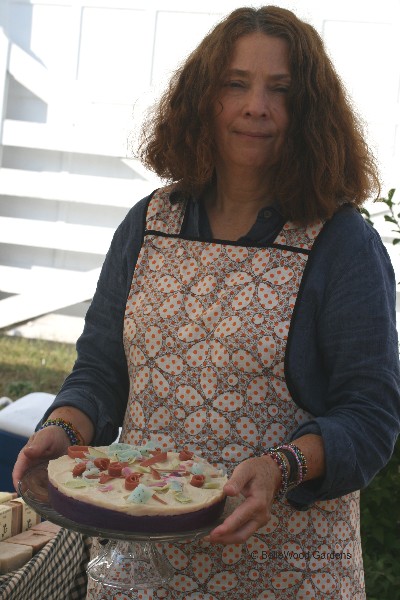
Don't take a bite though! It's a cake of her wonderful soap.